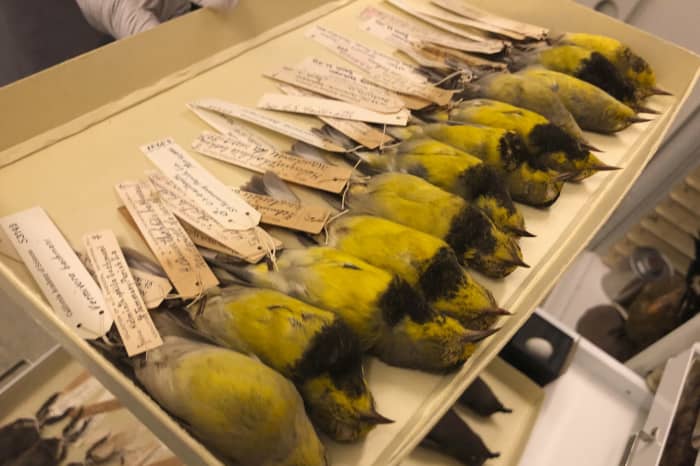The U.S. Fish and Wildlife Service proposed Wednesday to remove 23 animals and a plant from the endangered species list, reluctantly declaring them all likely extinct.
They join the list of 650 U.S. species already determined to be lost.
Among the latest delisting are the ivory-billed woodpecker, Bachman’s warbler, Scioto madtom, San Marcos gambusia, and eight species of Southeastern freshwater mussels. From Hawaii alone are eight birds and a flower. One bird and a bat from U.S. territory Guam were also included.
The ivory-billed woodpecker was perhaps the best known species the Fish and Wildlife Service declared extinct. The woodpecker went out stubbornly, making unconfirmed appearances in recent decades that ignited a frenzy of ultimately fruitless searches in the swamps of Arkansas, Louisiana, Mississippi and Florida, the Associated Press reported.
A leading figure in the hunt for the ivory-billed woodpecker said it was premature to call off the effort, after millions of dollars spent on searches and habitat preservation efforts.
“Little is gained and much is lost” with an extinction declaration, Cornell University bird biologist John Fitzpatrick, told the AP.
There is a three-month comment period before Fish and Wildlife makes the updated list permanent.

Examples of the Bachman’s warbler lie in a specimen tray at the California Academy of Sciences in San Francisco.
AP
The Center for Biological Diversity said the updated list covers animals and plants found in at least 19 U.S. states.
Scientists warn that climate change, especially a warming planet, on top of other pressures, could make such disappearances more common. Mostly human-linked factors are behind the extinctions: over-development, water pollution, logging, competition from invasive species introduced by people, birds killed for feathers and animals captured by private collectors.
Environmental groups also pointed to government bureacracy in slowing protections.
“The Endangered Species Act has prevented the extinction of 99% of the plants and animals under its care, but sadly these species were extinct or nearly gone when they were listed,” said Tierra Curry, a senior scientist at the Center for Biological Diversity. “The tragedy will be magnified if we don’t keep this from happening again by fully funding species protection and recovery efforts that move quickly. Delay equals death for vulnerable wildlife.”
Related: Best New Ideas in Money: Every whale is worth $ 2 million? Why it’s time to add the value of nature to GDP
A 2016 study found that species waited a median of 12 years to receive safeguards from the U.S. Fish and Wildlife Service. Several of the species in today’s announcement went extinct during a delay in the listing process, including the Guam broadbill, little Mariana fruit bat, and the southern acornshell, stirrupshell and upland combshell mussels.

Tubercled-blossom pearly mussels at one time collected from the Ohio River. The freshwater mussel is among 23 species that U.S. wildlife officials say have gone extinct.
AP
In total, at least 47 species have gone extinct waiting for protection, the Center for Biological Diversity predicts, suggesting that hundreds more species face extinction while waiting for an endangered species listing.
Nine months into his term, President Biden has not filled the job of director for the Fish and Wildlife Service.
The Biden administration did request more than a $ 60 million increase for endangered species, the largest increase requested for the program in history. The House Appropriations Committee reduced that request by $ 17 million.
Increasingly, environmentalists and economists are putting monetary value on lost species and pushing political powers to do the same.
A separate report from Fish and Wildlife said the American bumblebee is getting closer to endangered status. The loss of pollinators alone would equate to a drop in annual global agricultural output of about $ 217 billion, the World Economic Forum predicts.
